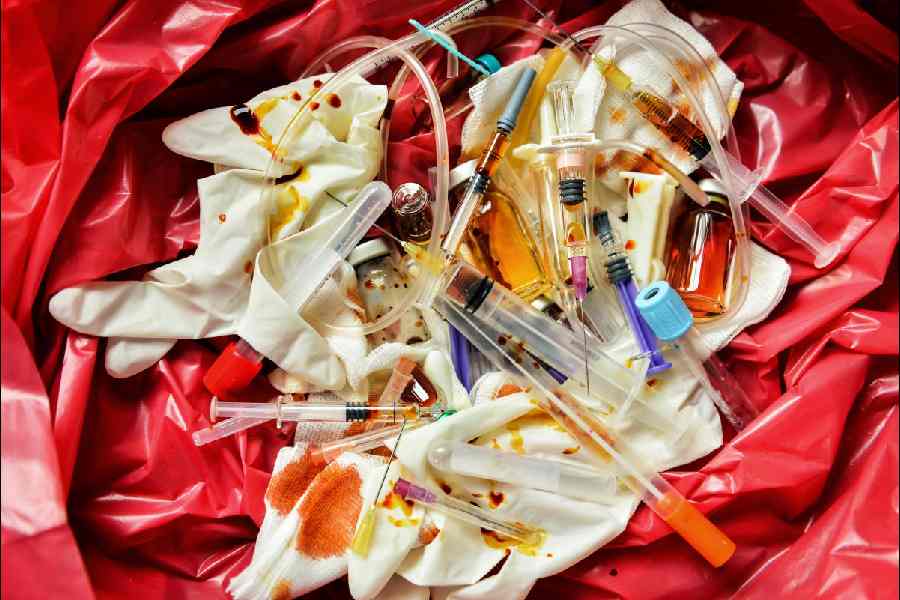One man’s waste is another man’s treasure, literally so in the case of biomedical waste. On an average, a hospital generates about 100 gramme of plastic waste every day per bed in the form of surgical gloves, saline bottles, IV tubes, syringes and so on. If properly discarded, this fetches the hospital Rs 5 at Rs 50 per kilogramme from a recycler. But when sold illegally and repackaged, each item finds its way back to the market with a total price tag of Rs 75-100 — almost a 20-times spike in profit. The alleged misuse of biomedical waste and its improper disposal in West Bengal are under the scanner of the Central Bureau of Investigation after the rape and the murder of a doctor at R.G. Kar Medical College and Hospital. The numbers, in fact, do not add up in West Bengal’s case. According to the records of the Central Pollution Control Board, in 2014, West Bengal had 1.03 lakh hospital beds that generated 42.2 lakh tonne of waste per day out of which only 22.7 lakh tonne was treated. In 2023, while the number of beds had increased to 1.68 lakh — a 63% rise — the waste generated went up by less than 2% and all of it was apparently treated. Records show that in 2017, the amount of biomedical waste treated was greater than what was generated. There are glaring gaps in the data. Misuse is not the only problem. Health department figures suggest that a part of the biomedical waste generated is also erroneously discarded with ordinary trash. West Bengal is not alone in its mismanagement of biomedical waste. In 2023, Karnataka was leaving nearly 40% of its biomedical waste untreated.
There is no dearth of laws regulating the disposal of biomedical waste in India: the Biomedical Waste Management Rules, 2016 is a case in point. But implementation, as usual, is lax. In West Bengal, regulatory bodies, such as state pollution control authorities and health department officials, often turn the other way while hospitals — public and private — flout biomedical waste disposal laws. This despite the fact that biomedical waste — its quantity has risen since the Covid-19 pandemic — poses serious health and environmental hazards. The practices of colour coding and segregation of biomedical waste, training hospital staff on how to dispose of it, and strict record-keeping of the amount of waste generated and disposed of should be implemented thoroughly to tackle the malaise.










